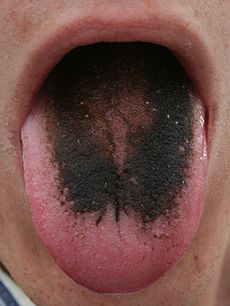Dercums disease is a disease accompanied by painful fatty swellings and by carious nerve lesions. Pain in the fatty tumors usually last for at least three months. Often obesity occurs in a short period of time but there is also a type of Dercums disease that can occur without overweight. The pain in fat and skin can be very intensive and can be described as aching, stabbing, smarting or burning. Swellings consisting of irregular shaped soft fatty tissue deposits may occur in many areas of the body. These deposits may spontaneously disappear, leaving hardened lumpy or rope-like tissue or pendulous fold of the skin. It can exist in practically the entire fatty tissue layer, but most commonly affected are the knees, trunk, forearms, and thighs, sometimes sparing of the face and hands.
Some affected individuals may experience depression, lethargy and confusion, “fatty tumors” can be felt in the fat, they are intensely painful, and usually harmless, unless a tumor moves to the lung or heart which can be fatal.
Other common symptoms are:
- Various areas of the body may swell for no reason.
- The fingers become clumsy, you drop things and sometimes the fingers go numb.
- Disturbed sleep, many have difficult time going to sleep because of the pain, but other forms of sleeping disorders may occur.
- General fatigue, gets worse with even mild activity.
- Stiffness after resting, especially in morning.
- Skeletal pain in wrist, elbows, hips, tail bone, and the long bones in arms and legs.
- Headache.
- Memory lapses and concentration difficulties makes it difficult to learn new things and to accomplish demanding intellectually jobs.
- Feeling hot is often felt by the patients.
- Tenderness under the feet, it feels like walking on glass.
- Tenderness in skin, difficulties to wear tight firming clothes or take shower.
The pain seems to depend on the temperature and the weather and decrease normally at dry heat. Warm baths have a positive but temporary impact though some patients do not tolerate heat. Generally the pain increases with menstruation in women and sexual problems can arise because of the pain. Dercum’s pain always exists, regardless is you sleep or are awake the pain can make it difficult to walk, drive a car, open a water tap, lift items, carry bags, open heavy doors, vacuum, clean, hang laundry, wash floors, wipe windows, ect.
Causes:
Causes are poorly researched; the symptoms and the lack of treatments can seriously affect the quality of life. Since the disorder does not show on the outside it can be hard for others to see the level of difficulties and discomfort the patient experiences. More than half of the patients are unable to work and the disorder can grow slowly for many years or quickly because of external stress, such as: surgery, pregnancy, or flu. Dercum’s is thought to be inherited as an autosomal dominant genetic trait that is particularly strong in the line of grandmother-mother-daughter. This disease is an auto-immune disease such and not a metabolic disturbance.
Treatment:
The Dersum’s disease diagnosis is based on what the patient tells and what the doctor finds at his examination. There are no test to take, but some blood samples can show signs of infection that the immune system is not acting properly. The doctor can also take blood samples in order to exclude other disease. Treatment is inadequate. Attempts have been made to get patients to lose weight, but it extremely difficult. If the patient does succeed, the weight loss has little of no effect on the symptoms. Medication that decreases pain, massage, warm baths, acupuncture, avoiding physical or psychological stress or information about the disorder may all help with treatment.









